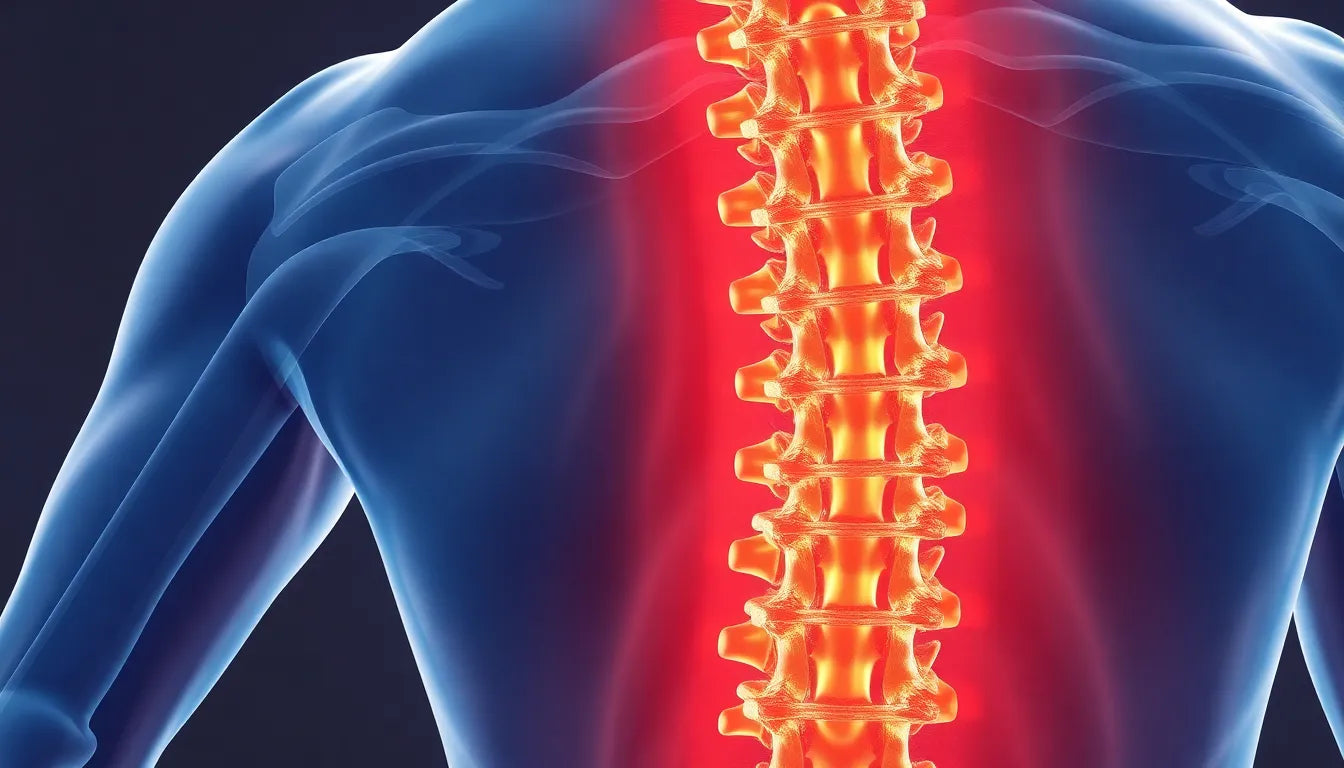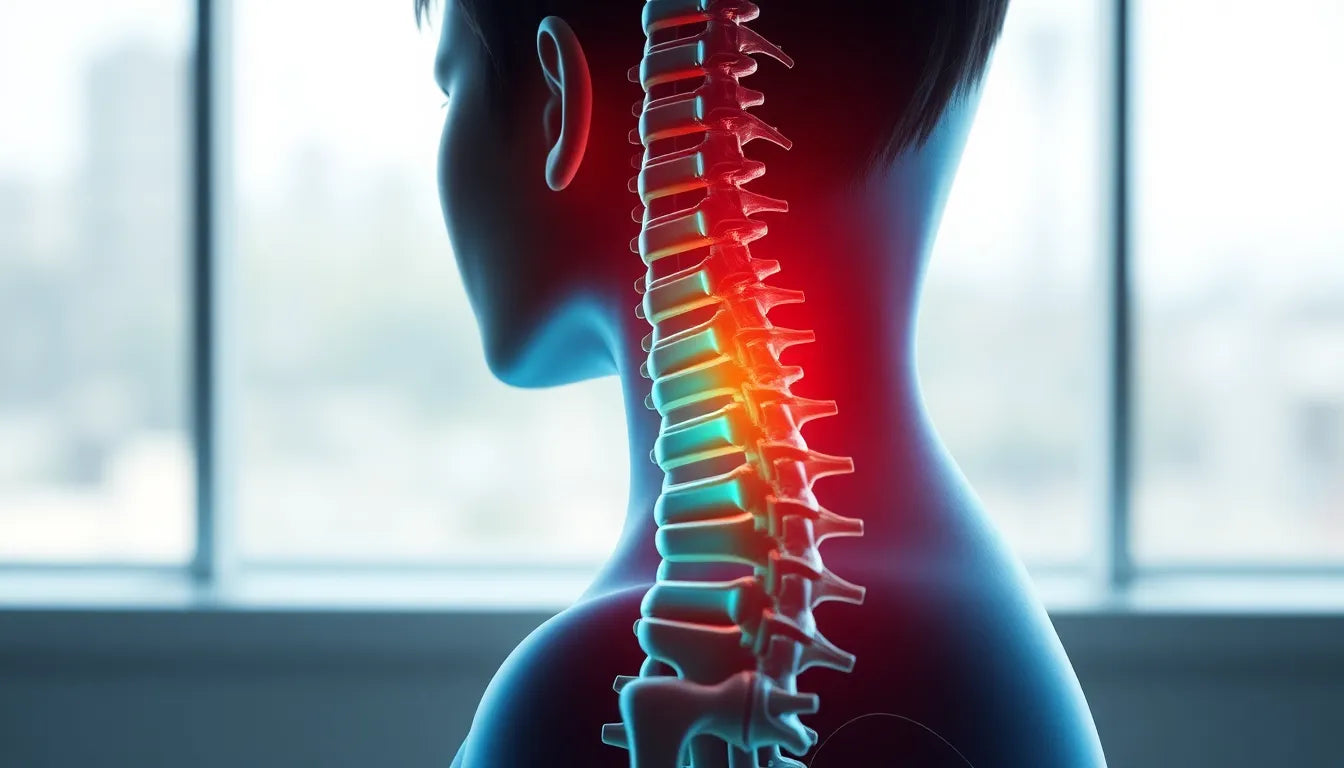Experiencing discomfort in your lower back can be a sign of a herniated disc, a common condition that affects the lumbar spine. A herniated disc occurs when the soft, gel-like center of a spinal disc pushes through a crack in its tougher exterior. This protrusion can irritate nearby nerves, leading to symptoms that significantly impact daily life.
Recognizing the symptoms of a herniated disc
One of the most telling signs of a herniated disc in the lower back is persistent lower back pain. This pain can extend to the legs, a condition often referred to as sciatica. Other symptoms include numbness, tingling sensations, and muscle weakness in the legs. These symptoms can vary in intensity and duration, making it crucial to seek medical evaluation if you suspect a herniated disc.
The importance of timely intervention
Addressing a herniated disc promptly is vital to prevent further complications and improve your quality of life. If left untreated, the condition can lead to chronic pain and potentially more severe nerve damage. Early diagnosis and intervention can help manage symptoms effectively and reduce the risk of long-term issues.
Prevalence and impact on daily life
Herniated discs are particularly common among adults aged 30 to 50, often resulting from wear and tear or sudden injury. This condition can significantly affect daily activities, making simple tasks like bending, lifting, or even sitting uncomfortable. The impact on overall well-being can be profound, highlighting the need for effective relief strategies to restore normal function and comfort.
Understanding the nature and symptoms of a herniated disc in the lower back is the first step towards finding relief. By recognizing the signs early and seeking appropriate care, individuals can mitigate the adverse effects on their daily lives and work towards a pain-free future.
Conservative treatment approaches for herniated discs
When dealing with a herniated disc in the lower back, conservative treatment options are often the first line of defense. These methods focus on alleviating pain and promoting healing without the need for invasive procedures. One of the key strategies involves finding a balance between rest and activity. While it is important to rest to allow the body to heal, prolonged inactivity can lead to muscle atrophy and stiffness, which may exacerbate the condition. Patients are advised to avoid activities that worsen their pain, such as heavy lifting or prolonged sitting, while incorporating gentle movements that keep the body active.
Pain management techniques
Pain management is crucial in the early stages of treating a herniated disc. Nonsteroidal anti-inflammatory drugs (NSAIDs) like ibuprofen and naproxen are commonly recommended to reduce inflammation and alleviate pain. In some cases, doctors may prescribe muscle relaxants or stronger pain medications to manage severe discomfort. Additionally, ice and heat therapy can be beneficial. Applying ice packs during the initial days helps reduce swelling, while transitioning to heat therapy can relax tense muscles and improve circulation, aiding in recovery.
The role of physical therapy and rehabilitation
Physical therapy plays a vital role in the rehabilitation of a herniated disc. Therapeutic exercises designed to stretch and strengthen the muscles around the spine can significantly enhance recovery. These exercises not only improve flexibility but also help stabilize the spine, reducing the risk of future injuries. Physical therapists may employ additional modalities such as massage, electrical stimulation, and ultrasound to further aid in pain relief and muscle relaxation.
Exploring adjunct therapies
In addition to traditional treatments, several adjunct therapies have shown promise in managing herniated discs. Acupuncture, spinal manipulation, and massage therapy are popular alternatives that can complement standard care. These therapies aim to relieve pain and improve overall function, providing patients with a more holistic approach to recovery. While the effectiveness of these treatments can vary, many patients find them beneficial in conjunction with conventional methods.
Advanced care options for persistent symptoms
For individuals who do not respond to conservative treatments, more advanced care options may be considered. Epidural steroid injections are one such option that can provide significant relief by reducing inflammation around the affected nerves. These injections are typically reserved for cases where symptoms persist beyond several weeks despite conservative measures.
In severe cases, where there is significant neurological impairment or when other treatments fail to provide relief, surgical intervention may be necessary. Surgery aims to remove or repair the damaged disc, alleviating pressure on the nerves and restoring function. It is generally considered a last resort due to its invasive nature and the associated recovery time.
Understanding the range of treatment options available for a herniated disc in the lower back is crucial for effective management. By exploring both conservative and advanced care strategies, patients can work with their healthcare providers to develop a personalized treatment plan that addresses their specific needs and promotes a return to normal activities.
Holistic management and lifestyle adjustments for herniated discs
When managing a herniated disc in the lower back, integrating holistic approaches and lifestyle adjustments can significantly enhance recovery and prevent future episodes. Ergonomic supports, such as specially designed chairs and cushions, play a vital role in alleviating pressure on the spine. These aids can help maintain the natural curve of the spine, reducing strain and discomfort during prolonged periods of sitting.
Additionally, making changes to your workspace can support recovery. Adjusting the height of your chair, desk, and computer monitor to promote good posture can prevent further stress on your back. Incorporating regular breaks to stand and stretch throughout the day also aids in maintaining spinal health.
Education and body mechanics
Educating yourself on proper body mechanics is crucial in managing a herniated disc. Understanding how to move safely and efficiently can prevent exacerbating your condition and reduce the risk of future injuries. Simple practices, such as bending at the knees instead of the waist when lifting objects, can make a significant difference in spinal health.
Ongoing education and awareness are essential. Engaging with healthcare providers to learn about safe movement practices and participating in educational workshops or sessions can empower you to take control of your recovery and maintain a healthy spine long-term.
Frequently Asked Questions
What are the first signs of a herniated disc in the lower back?
The initial symptoms of a herniated disc often include persistent lower back pain, which may progress to leg pain, numbness, or tingling sensations. These symptoms can vary in intensity and may be accompanied by muscle weakness in the legs.
How long does it take to recover from a herniated disc?
Recovery time from a herniated disc can vary, but most individuals experience improvement within a few weeks to a few months with conservative treatment. Adhering to a prescribed treatment plan can facilitate a quicker recovery.
Can a herniated disc heal on its own?
Yes, many herniated discs improve without surgical intervention through conservative care, such as physical therapy, pain management, and lifestyle adjustments. However, it is important to consult with a healthcare provider for an appropriate treatment plan.
What activities should be avoided with a herniated disc?
To prevent aggravating a herniated disc, avoid activities that involve heavy lifting, prolonged sitting, or any movements that increase pain. It is crucial to follow your healthcare provider's advice on safe activities during recovery.
Do ergonomic chairs help with herniated discs?
Yes, ergonomic chairs can provide necessary support and reduce strain on the lower back, making them a valuable tool in managing herniated disc symptoms. These chairs are designed to promote good posture and spinal alignment, which can alleviate discomfort.
By understanding and implementing these holistic management strategies and lifestyle adjustments, individuals can enhance their recovery from a herniated disc in the lower back. Additionally, addressing common concerns through an FAQ section provides clarity and guidance, empowering patients to make informed decisions about their health.
Sources
- Mayo Clinic. "Herniated Disk - Diagnosis and Treatment."
- Cleveland Clinic. "Herniated Disk (Slipped or Bulging Disk)."
- OrthoInfo (AAOS). "Herniated Disk in the Lower Back."
- Johns Hopkins Medicine. "Lumbar Disk Disease (Herniated Disk)."
- AANS. "Herniated Disc."
- Barrow Neurological Institute. "Herniated Disc - Symptoms, Diagnosis, Treatment."
- WebMD. "Herniated Disk Treatment, Remedies, and Medications."


















